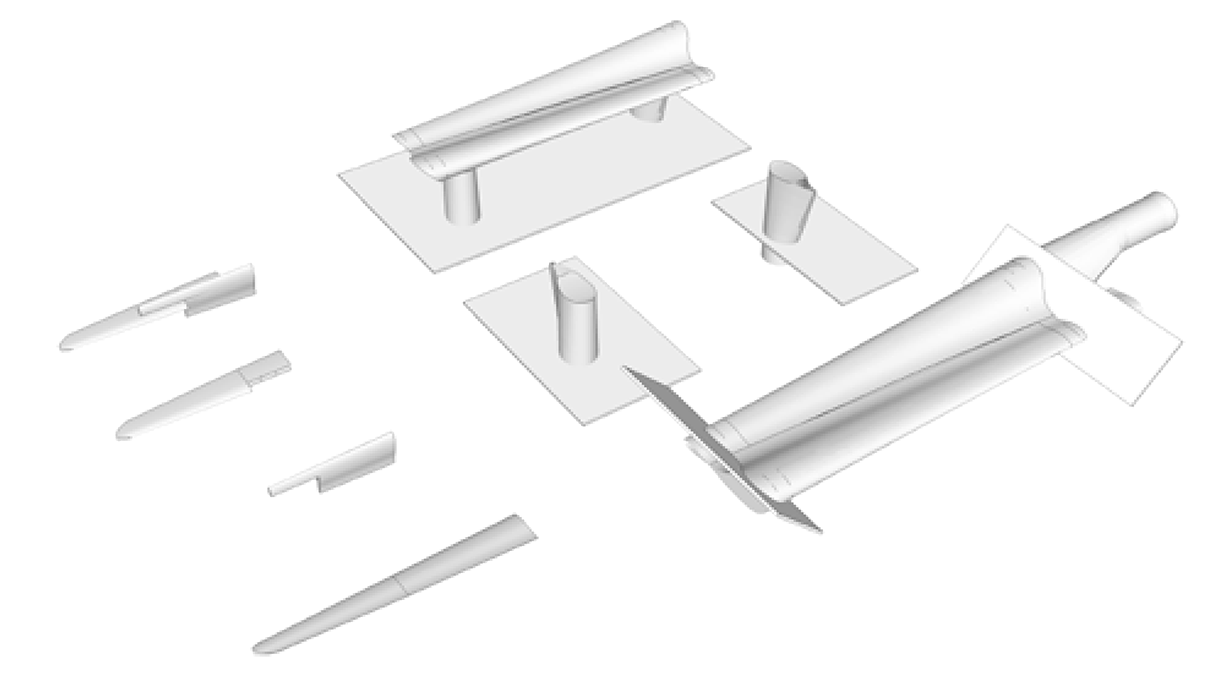
- Inspiring People -
- 6mins -
- 4,111 views
‘Blade Made’ turns discarded wind turbine blades into playgrounds and street furniture
To Netherlands-based Superuse, waste rotor blades are seen as structural and aesthetic elements for large scale, worldwide use in design and architecture, and their first eye-catching installations are functional, sustainable conversation starters.
A second life for difficult waste
Wind turbines last about 20 years and are then dismantled. The metals are easy to recycle, but that is not the case for the blades. The composite of reinforced plastic, fiberglass and balsa wood is so strong that it costs a lot of energy and money to take it apart again. Moreover, you are still left with an inferior product. “In the meantime, we want to give all blades a second life, without hindering future recycling solutions. If the playgrounds or the street furniture have to be replaced in 15 or 30 years’ time, this material can still be recycled,” says architect Jos de Krieger of the Rotterdam architect collective Superuse Studios, which includes Blade Made. — Change.inc
Knife cuts both ways
That knife cuts both ways. On the one hand, it is a useful solution for the 1.3 million kilotons of discarded rotor blades, which the Netherlands will already have in 2025, according to Windesheim University of Applied Sciences. That amount is expected to double by 2040.
On the other hand, no new raw materials are needed for playgrounds and street furniture. That saves 90% in CO2 emissions. Every year 100 to 150 wind turbines are written off and replaced. With the 400 discarded rotor blades that now end up in the waste stream, 5% of the total production of playgrounds, bus shelters, pedestrian bridges and street furniture can be made. “Sometimes 100 blades come from one wind farm. For example, we can make 100 playground equipment out of this,” De Krieger told Change.inc
International
Blade Made has already reused 25 blades for playgrounds and benches in Rotterdam and Terneuzen, and bus shelters in Almere. What stands out is the playful and colorful design. The company wants to give all blades a second life, but no more.
De Krieger: “We are not going to import blades from abroad. We want to be part of the solution, but not bigger than the problem.” That is why Blade Made wants to start later in other countries such as Germany and France, where many more windmills are being scrapped.
A Pioneer
Since the summer of 2021, Blade Made has become a separate startup and has joined forces with New Citizen Design (NCD) and Newton Brown Urban Design (NBUD). It is now at the table with the large wind farm builders and energy companies, who have to get rid of their discarded blades. Last year, the startup was selected from 80 candidates for the first Impact Program of TEDxAmsterdam, which helps brilliant do-gooders on the market. Out of the seven selected pioneers, Blade Made was named ‘Pioneer of the year’.
Source: Change.inc
BladeMade designed shelters for the thousands of daily commuters to use the bus-train transfer station at Almere Poort. The durable and pretty much indestructible shelter design uses four 30m rotor blades. Waste rotor blades are easy to find in Almere, Holland’s #1 wind-energy region. Stacked in a Stonehenge like manner, two 30m blades are used to create a large shelter. Two of these large shelters are being built. The changing shape over the blades’ length gives a shelter roof that morphs into different forms depending on the angle from which it is viewed. Every part of the blade is used. © Denis Guzzo Source: Denis Guzzo/Superuse

The blades were cut into four sections to harness the different inherent qualities along the blade’s length. This gives construction pieces that are essentially readymade for various construction purposes. The strongest and heaviest part (former connection to the wind turbine axial) is used as roof supporting columns and the widest part of the roof’s blade. The blade’s tip is used for the long seating bench, and the circular end pieces are used for large planting pots placed around the site. Source: Superuse
Superuse founder Denis guzzo
RE-USE.EU was founded in 2017 by Denis Guzzo, a documentary artist and producer who graduated in communication design from the Royal Academy of Arts in Te Hague, the Netherlands, in 2010.
He intensively documented the work of Superuse for ten years now. His work has been exhibited and screened internationally.
His photographs were published in magazines and platforms such as A+U, BBC, Icon, Metropolis M, New York Times, Volume, in many books and on book covers. All images in this article are by Denis Guzzo unless otherwise stated. Find out more at denisguzzo.com
View this post on Instagram
The ReWind public seating is located at Willemsplein, a public square at the foot of the well-known Erasmus bridge; a public seating made from rotor blades was designed and installed for the Rotterdam municipality with joint funding from Joulz Energy Company. Source: Denis Guzzo/Superuse
In other “what to do with scrap turbine blades?” News
Elsewhere, engineers have installed bridges in Poland and Ireland made from decommissioned wind turbine blades, sparing the durable, lightweight, weatherproof giants from disposal by polluting incineration or languishing in landfills for millennia.
Meanwhile a coalition of industry and academic leaders spearheaded by Danish wind turbine manufacturing giant Vestas has developed a new technology they say will be the final technology step towards a fully recyclable wind turbine value chain.
View this post on Instagram
The seating in Rotterdam got an LGBTQ makeover in 2020. The seating is made from reused discarded-windmills’ blades while the concrete blocks are made of 90% of recycled concrete material from local demolitions. Source: Denis Guzzo/Superuse

